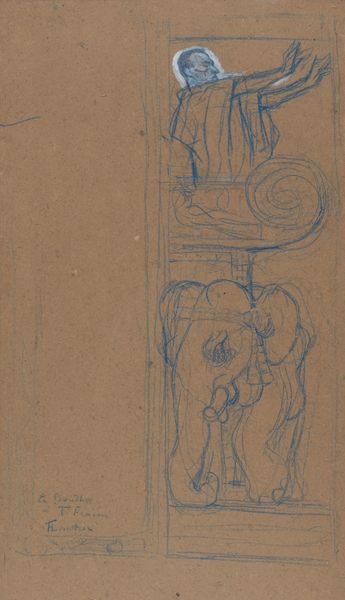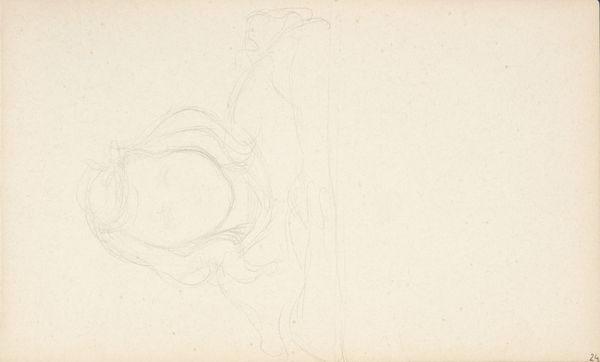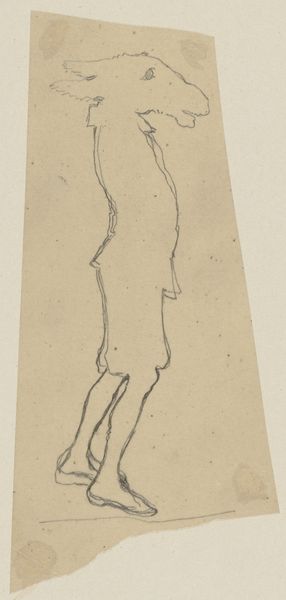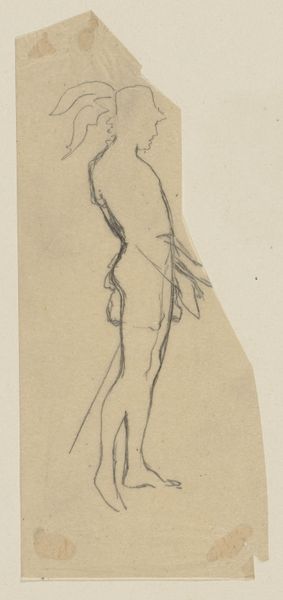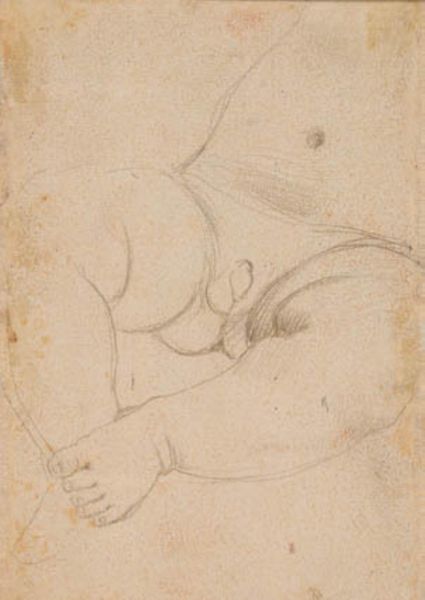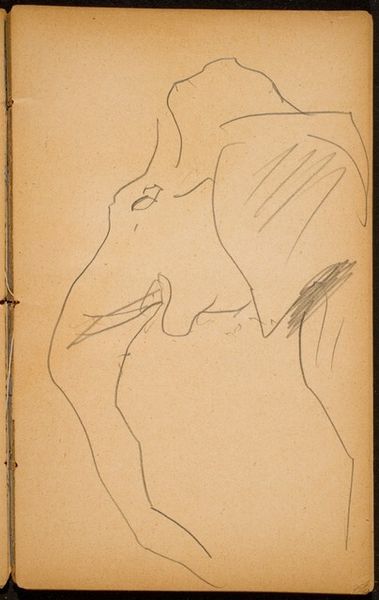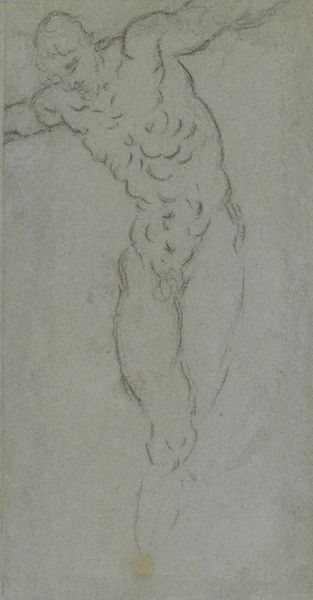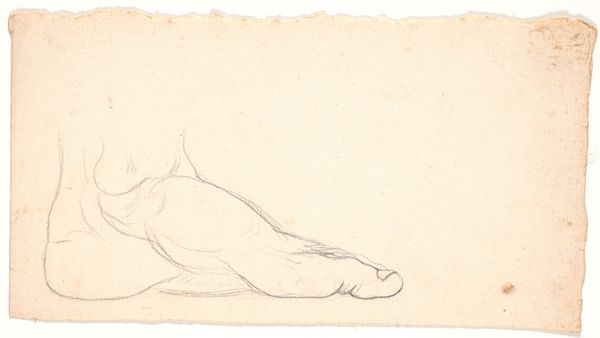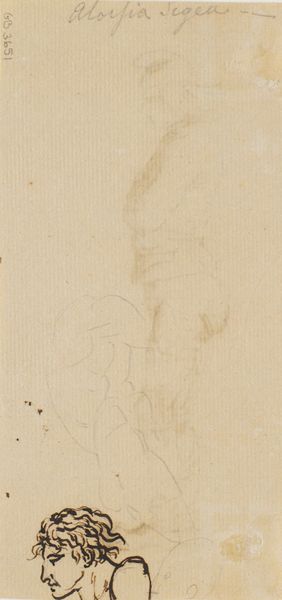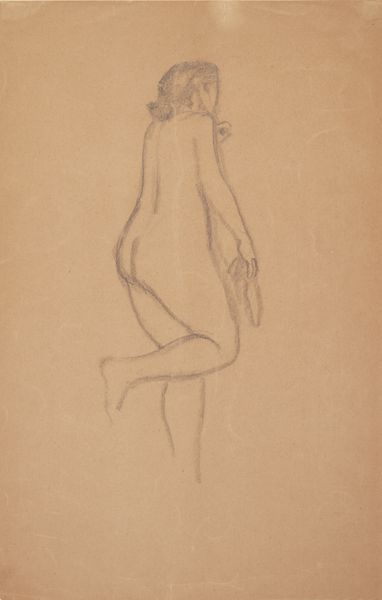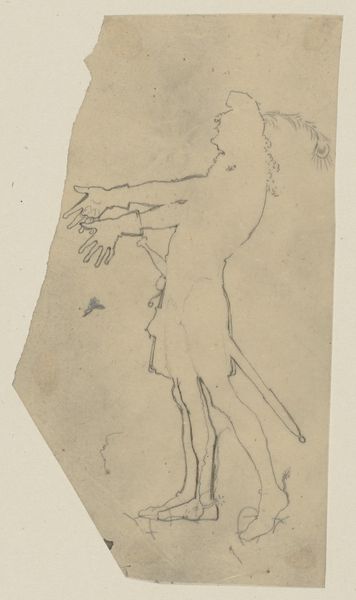
drawing, pencil
#
portrait
#
drawing
#
neoclacissism
#
figuration
#
pencil
#
portrait drawing
#
academic-art
#
nude
Dimensions: 215 mm (height) x 156 mm (width) (bladmaal)
Editor: Here we have "Skitse af hofteparti," a pencil drawing of a nude torso by Nicolai Abildgaard, created sometime between 1743 and 1809. It feels… surprisingly intimate for an academic sketch. What do you see in this piece, especially considering its historical context? Curator: Beyond the initial impression of intimacy, I see a reflection of the Neoclassical obsession with the idealised body, influenced by ancient Greek and Roman forms. However, consider this: who gets to decide what is 'ideal'? Academic art often served to reinforce societal norms and power structures. How might this seemingly innocuous sketch participate in broader discourses of gender and the male gaze of that period? Editor: That's a perspective I hadn't fully considered. I was mainly focused on the artist’s technical skill, the way the light falls on the form. Curator: Technique is certainly crucial, but it's never neutral. Think about whose bodies were deemed worthy of representation in art, and who was excluded or marginalised. The artist, likely male, objectifies the male form as a symbol of strength and reason—virtues historically associated with masculinity and power. Where are the equivalent studies of the female form that give this sense of power? Editor: So, even a study like this can reveal power dynamics at play in the art world and society at large. Curator: Precisely! By interrogating these seemingly straightforward representations, we can expose the underlying assumptions and biases that shaped both the creation and reception of art. It becomes less about the pure aesthetic and more about the cultural narrative embedded within the lines. It challenges us to be more critical of what we see, to question the standards being promoted. Editor: This has really opened my eyes to how art, even seemingly simple sketches, can be read through the lens of social and political power. I'll never look at academic drawings the same way again. Curator: Wonderful! It's about moving beyond surface aesthetics to actively engage with the complexities and social significance inherent in all art forms.
Comments
No comments
Be the first to comment and join the conversation on the ultimate creative platform.
